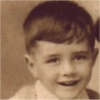 | Name: Kevin Jones
Overview: Kevin Jones` father worked in a Welsh mine, then joined the Royal Navy and worked his way up from sick berth attendant to Lieutenant Commander. Kevin went to various grammar schools in Navy ports and left at 18 to train as an accountant. He worked for several large companies, unhindered by his diabetes, but has had more problems in recent years. In 2002 his leg was amputated, but he had great help from the Limb Centre and now walks and drives with an artificial limb. He loves jazz, and is pictured with a statuette of a jazz musician.
Hits=2 |
|
| 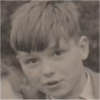 | Name: Leon Cowdery
Overview: When Leon Cowdery left school at 15, his diabetes barred him from his chosen profession of sign-writing because he was not allowed to go up a ladder. He worked as a cycle mechanic and then, in order to avoid going to his parents` Seventh-day Adventist church, he took up floor-laying at weekends. This led him into the building trade and he has been going up ladders ever since! He designed the house in which he lives and, now that he`s semi-retired, he helps his wife with gardening and maintains four motorbikes from the 1950s.
Hits=2 |
|
|  | Name: Jeanette
Overview: Jeanette left school at 15 and worked in one of the first supermarkets in Malvern, where she met her husband. They married when she was 17 and had two children. During her second pregnancy, she had high glucose levels, but it wasn`t until a year later that she was diagnosed with diabetes and admitted to hospital for 5 weeks. She continued to use a glass syringe until c.2002. She feels that diabetes has caused her few problems, but she had to give up work because of osteoarthritis at the age of 44.
Hits=2 |
|
| 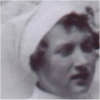 | Name: Monica Winn
Overview: Monica Winn was the only child of a naval officer and grand-daughter of a doctor who diagnosed her diabetes only 4 years after insulin was first manufactured in England. She nearly died of pneumonia; had bronchitis every winter; spent much time in bed and never attended school. Her parents were told she wouldn`t live beyond 14 and she was told that she wouldn`t have children. She had a daughter in 1945 and recorded this interview when she was nearly 86. She is very fit and copes well with slight memory loss after a series of mini-strokes.
Hits=2 |
|
|
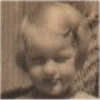 | Name: Margaret Elliott
Overview: Margaret Elliott`s newly-qualified local doctor diagnosed diabetes as soon as he walked through her front door - from the smell of acetone. Her family was poor but managed to pay for some medical care through a thrift club. Her parents did her injections for her and her husband did them after she married at 20. She was advised not to have children, but had 3 normal births and one caesarean. She attributes her good health to her husband`s care and a very strict diet. She has smoked 6 or 7 cigarettes a day since she was 14.
Hits=2 |
|
| 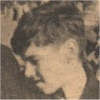 | Name: Fred
Overview: Fred`s family was poor and food was rationed in his early years: he remembers that a Mars bar was cut into slices to last 4 or 5 days! After diagnosis, he was told that `I had to control the diabetes rather than the diabetes control me` and has tried to follow that advice ever since. He lost his sight in 1978 and his second wife left him because she couldn`t cope. He began a successful business making garden furniture and now lives with his third wife, who is also blind.
Hits=2 |
|
|
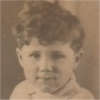 | Name: Allan Jones
Overview: Allan Jones` father was a miner with six children. They had little money but had to pay for insulin and equipment until the National Health Service was created in 1948. They couldn`t afford cotton wool and re-used needles until they were blunt. When Allan was 15 he got a job as a messenger on the railways but had to pass a medical before being promoted. He feared he would lose his job if his diabetes was discovered, so took with him a sample of his brother`s urine! He passed the medical and worked happily on the railways for 30 years.
Hits=2 |
|
| 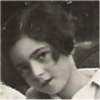 | Name: Erika Harding
Overview: Erika Harding`s father was Jewish and, in 1939, after the Nazis invaded Austria, she came by boat to England. When she looks at her photo of the thin, hollow-eyed little girl on the boat, she`s sure that she already had diabetes. After diagnosis, she was treated at King`s College Hospital, London, by R.D. Lawrence (co-founder of the British Diabetes Association, now Diabetes UK). She left grammar school at 18 and worked as a medical laboratory scientist until she retired. She and her artist husband have both played in many chamber music ensembles.
Hits=2 |
|
|
 | Name: Husne Ara
Overview: Husne Ara`s father was diagnosed with diabetes in Bangladesh in 1963. Although she was only 10, she gave her father his injections and became interested in diabetes. She came to England to get married when she was 17 in 1970. In 1990 she got a job as Diabetes Link Worker at the Royal London Hospital, to interpret for Bangladeshi patients in Tower Hamlets, translate information for them and educate her colleagues about cultural differences. She became a Diabetes Lay Educator in 2005 and runs courses for Bangladeshi people with Type 2 diabetes. She was diagnosed with diabetes herself in 2006.
Hits=2 |
|
| 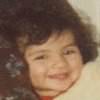 | Name: Emma
Overview: Emma`s mother, Bena, was diagnosed with diabetes in Uganda in 1965 and came to England when her family was expelled by Idi Amin. She married an Englishman, Terry, and had two children – Emma and her younger sister. When Terry was at work, Emma and her sister had to cope from an early age with their mother becoming unconscious. Her sister has now married and left home, but Emma still lives with her parents and was often phoned at work when her mother passed out – until her mother attended a DAFNE course and gained better control of her diabetes.
There are also interviews with Emma`s mother, Bena, and her father, Terry.
Hits=2 |
|
|
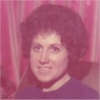 | Name: Shirley
Overview: Shirley left school at 16 and worked for the Inland Revenue until retirement. When she was diagnosed, her mother was very ashamed. Shirley looked after her parents until they died and then lived alone. She has had to cope alone with severe hypos, but says that living alone makes it easier to keep to a strict diet. She feels that her diet has made her healthier than she would have been if she hadn`t had diabetes. She has a low opinion of doctors, apart from a few consultants, but likes the group meetings held nowadays by specialist nurses.
Hits=2 |
|
| 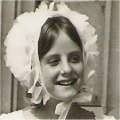 | Name: Harriet
Overview: Harriet was diagnosed when she was 12, and loved Great Ormond Street Hospital, where she was treated until she was 17. Her grammar school couldn`t cope with her diabetes, so she left at 15 to do O and A Levels elsewhere, and eventually gained a Diploma in Fine and Decorative Arts. She has worked for the Tate Gallery and for a company that bought art for corporations, and has also run her own business, and worked in college and university administration. Her daughter was diagnosed with diabetes at the age of 9.
There is also an interview with Harriet`s husband, Greg.
Hits=2 |
|
|
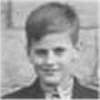 | Name: Peter
Overview: Peter`s father was a professor and both parents were well-informed about diabetes after his older brother was diagnosed in 1945. They spotted Peter`s symptoms early and at first he only needed four units of Lente insulin to last 24 hours. He was educated at Oxford and worked in the steel industry for several years. He is now a management consultant and has few problems associated with diabetes. He has recently remarried, after being widowed in 2003, and has a daughter with diabetes who is `much more able to cope with disturbances to her daily routine than I am`.
Hits=2 |
|
| 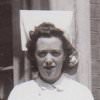 | Name: Joan Jones
Overview: Joan Jones trained as a nurse during the Second World War. She first encountered diabetes during fever training at an isolation hospital in 1940 and then among war casualties in London. When she was midwifery sister in Dulwich in the early 1950s, mothers with diabetes had been warned to avoid pregnancy and expected their babies to be stillborn; but at Birmingham Maternity Hospital from 1955 - where a diabetic clinic was run jointly by John Malins and obstetrician Samuel Davidson - most babies lived. As a district sister in Coleshill from 1963-82, she helped many elderly patients with diabetes.
Hits=1 |
|
|
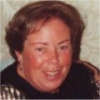 | Name: Christina
Overview: Christina`s parents came to Oxford from Eire in 1948 and she was brought up on an Irish diet of bacon, cabbage and potatoes. Her father worked in a car factory and her mother as a cook and cleaner. Christina went to a Catholic school until she was 15 and then started work folding paper at the University Press, where she met her husband. They married when she was 18 and had two sons. She worked as a cleaner in a private school for 31 years until registered blind in 2001, four years after being diagnosed with diabetes.
Hits=1 |
|
|  | Name: Philip Farrant
Overview: Dr. Philip Farrant was a general physician at West Hill Hospital in Dartford from 1963 to 1988. He was never officially designated as having a ‘special interest in diabetes`, but he ran the diabetic clinics and published on diabetes. In 1976, he encouraged a patient to found a local branch of the British Diabetic Association, which raised money for equipment and offered support to patients. In 1972, he established a postgraduate medical centre at Joyce Green Hospital, which moved to the new Darent Valley Hospital in 2000 and was re-named the Philip Farrant Education Centre.
Hits=1 |
|
|
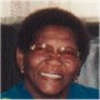 | Name: Agnes
Overview: Agnes` father worked in sugar cane fields in St. Kitts and her mother in the markets. Agnes worked as a maid until coming to England aged 22. She has been married twice and has five children. She controlled her diabetes with tablets, apart from a short spell on insulin while being treated for cancer. At the time of recording, she had recovered from cancer, but was about to go on insulin permanently. At 66, she still gets up at 4.30 every morning to work as a cleaning supervisor and mobile carer, and says her Christian faith sustains her.
Hits=1 |
|
| 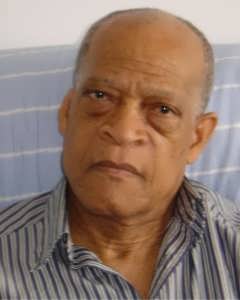 | Name: George Saunders
Overview: George Saunders was brought up in St.Kitts, worked for his father as a tailor, and came to England in 1958. Since recording this interview, he has received a lot of publicity, because his Birmingham workshop, where he worked as a tailor for nearly 30 years, has become part of a National Trust museum. After he was diagnosed, he was on tablets for about a year before changing to insulin. He is full of praise for medical staff, even though he ignores their advice when he thinks he knows best. He feels that his diabetes has caused him few problems.
Hits=1 |
|
|
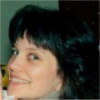 | Name: Julia
Overview: Julia was the first member of her family to go to university, and she taught in a primary school before specialising in teaching dance. Between her diagnosis in 1989 and the recording of this interview in 2004, she spent time in hospital for a variety of reasons, including the births of her three daughters. The biggest changes she noticed during these years were the increasing role of specialist nurses and also a shift to patient control: at first she was automatically put on a drip, whereas later the staff began to trust her to manage her own diabetes.
Hits=1 |
|
|  | Name: John Browning
Overview: John Browning`s father was an army officer and John always assumed that he would make his own career in the forces. He was diagnosed with diabetes at the age of 28, not long after getting married, and was invalided out of the army. He became a Conservative party agent and then a teacher. He still weighs his food and attributes his good health to his strict regime. He thinks one of the main improvements in his care has been to see the same specialist at each visit, instead of a different person every time.
Hits=1 |
|
|
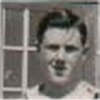 | Name: Ron Craythorne
Overview: Ron Craythorne worked all his life in the family business of carpentry and joinery but, when he retired, there was no-one to take over, so now he and his wife give shows for charity, showing people round the old workshop and selling the products of his woodturning. (He carved and painted the wooden fruit and bowls shown in his photo.) He has played team sports all his life and diabetes has caused him few problems. However, he knows of the problems it can cause, from members of the diabetic group he founded several years ago.
Hits=1 |
|
| 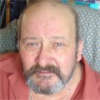 | Name: Victor Warman
Overview: Victor Warman`s father had been a Sick Birth Attendant in the Navy during the Second World War, and was very protective of his son after his diagnosis, advising him to avoid competitive sport. Victor left school at 15, spent much of his life as a machine-fitter, and ended up teaching Design Technology. His glucose levels go `up and down like a yoyo` and he now advocates plenty of exercise: `don`t do as I do, do as I say`. He has had several complications, but feels that diabetes is `not the be-all and the end-all of your life`.
Hits=1 |
|
|
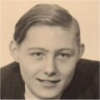 | Name: Patrick Grogan
Overview: Patrick Grogan was treated at King`s College Hospital by R.D. Lawrence (co-founder of the British Diabetes Association, now Diabetes UK) and he remembers Lawrence commenting on the amount of carbohydrate at a hospital Christmas party. He has always kept to a healthy diet, has had lots of exercise as a machine-tool fitter and maintenance worker, and has had no diabetic complications. He`s a member of NHS Concern and the West Midlands Pensioners Convention and says that taking an interest in improving society is what keeps him going.
Hits=1 |
|
| 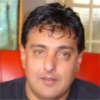 | Name: Mr. Baghria
Overview: Mr. Baghria`s parents are Sikhs who came from India in the 1950s; his father worked as a galvaniser in a factory. His parents` aim was that he should have a good education, but his own dream was to become a truck driver. He married young and he and his wife saved to buy his HGV licence. Not long afterwards, he was diagnosed with diabetes and his licence was revoked. He appealed and managed to get it back, on condition that he had a yearly medical - and he has been driving all over Europe ever since.
Hits=1 |
|
|
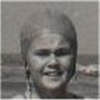 | Name: Victoria
Overview: Victoria`s father was a bank manager and she attended a private school and a grammar school. At 16, she developed an eating disorder after a boyfriend dropped her because she was diabetic, and at 25 she briefly rebelled against her diabetic diet. Otherwise, she feels diabetes has caused few problems and hasn`t prevented her from achieving her ambition of becoming a teacher. She thinks perhaps it did influence her not to have children, but she enjoys life with her partner, and is grateful for new blood testing equipment and other developments which have given diabetics greater freedom.
Hits=1 |
|
| 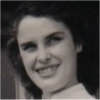 | Name: Grace
Overview: When Grace was diagnosed at the age of 15 her father was working for the Forestry Commission and they lived in a remote Suffolk wood. She was ill for months before diagnosis and thinks this was partly because they lived 4 miles from a GP and 20 miles from a hospital, and because her mother couldn`t face having another sick child after Grace`s sister died from leukaemia. Grace had early cataracts and was registered blind in her teens, but successful treatment throughout the rest of her life has meant that she has always had vision in at least one eye.
Hits=1 |
|
|
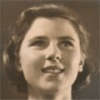 | Name: Margaret Williamson
Overview: Margaret Williamson was brought up in a village in North Yorkshire, the only daughter of an industrial chemist. Her mother was diagnosed with diabetes when Margaret was aged 2, and put on a diet of no carbohydrate with high quantities of insulin. When Margaret was diagnosed, a Newcastle consultant, James Spence, put mother and daughter on a more modern regime of high carbohydrate, which was weighed at each meal. After school, she went to business college in London, and worked as a secretary for directors of scientific institutions. She married a Cambridge research scientist and had two children.
Hits=1 |
|
|  | Name: Joanne Pinfield
Overview: Joanne Pinfield was only 5 when she had the frightening experience of waking from a coma in hospital and she has found diabetes frightening for much of her life. At school she felt isolated by being the only person with diabetes. She left at 16 to work in a pottery with a sympathetic boss who helped her not to feel ashamed of diabetes, but then reverted to hiding her condition during 12 years working in a factory. Her father`s death in 2001 prompted her to take better care of herself. She married in 2002 and runs a limousine business with her husband.
There are also interviews with Joanne`s mother, Mary Potter, and husband, Nick Pinfield.
Hits=1 |
|
|
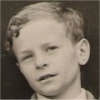 | Name: Philip
Overview: Philip was diagnosed aged 9 and considers that it`s better to get diabetes young, when the body is more adaptable. He attended a grammar school, and regrets that he often used diabetes as an excuse to miss school. He left at 16, but acquired more qualifications later and became a successful accountant. His diabetes was well controlled and caused little trouble for most of his life, until he began to get early morning hypos a few years ago. (He finds the term `hypo` unhelpful, since it`s used to refer to anything from a mild sensation to complete unconsciousness.)
Hits=1 |
|
| 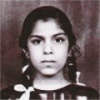 | Name: Bena
Overview: Bena was born in the Kigezi District of Uganda, the daughter of a wealthy businessman. She was diagnosed when nearly 12 and then shunned by children who thought diabetes was contagious. She lived on chapattis and spinach and a bitter vegetable juice thought to cure diabetes. When Idi Amin expelled Ugandan Asians in 1972, her family came to England, and she was delighted to be allowed to eat a wider range of food. She eventually married an Englishman and had two daughters. She works as an office administrator, in a social services department that supports disabled children.
There are also interviews with Bena`s daughter, Emma and her husband, Terry.
Hits=1 |
|
|
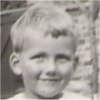 | Name: Francis Andrews
Overview: Dr. the Rev. Francis Andrews was diagnosed with diabetes on the day that war was declared in September 1939. He was the son of a doctor who`d worked as a medical officer in Flanders during the First World War. Francis also trained to be a doctor, and eventually became a consultant physician in rheumatology, having been advised not to specialise in diabetes. He married and has 6 children, 15 grandchildren and 1 great-grandchild, none of whom have diabetes. He took early retirement to train as a Catholic priest, and was ordained in 1994.
Hits=1 |
|
|  | Name: Gillian
Overview: Gillian was diagnosed when she was 23, while working as a
journalist in London. At the age of 26, a consultant advised her that if she
wanted children, it would be a good idea to have them soon, because "you`ve
got to consider whether you`re going to see them grow up". Her partner
didn`t want to be a father at that stage, so she decided to be a single
parent and has brought up two children on her own. Her daughter was
diagnosed with diabetes in 1999.
There is also an interview with Gillian`s son, Tom.
Hits=1 |
|
|
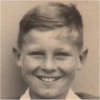 | Name: Ian Vokins
Overview: Ian Vokins was diagnosed shortly after leaving junior school and when he joined his secondary modern school, he was treated `like an alien` and fed dried apricots at every school dinner for 3 years! He was bullied throughout his school-days and left as soon as he could, aged 15. After that, life `seemed to open up` and he `started learning` while he worked as a technician in fields as diverse as atomic energy, cryogenics, orthotics, packaging, and space science. His work often took him abroad, and he says that diabetes hasn`t stopped him doing anything, apart from flying aeroplanes!
Hits=1 |
|
| 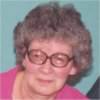 | Name: Betty
Overview: Betty`s first child, Nick, was the son of an American soldier who left England before Nick`s birth in December 1944. In 1961, Nick joined the RAF for 12 years and then returned home, aged 30, to live with his mother and work as a taxi driver. He liked sweet food before he developed diabetes around the age of 40 and found it hard at first to change his diet and give up smoking. He stopped taxi-driving when he was 54 because of failing eyesight and poor health and was on dialysis for about 3 years before he died in 2006.
Hits=1 |
|
|
 | Name: Zin Cherry
Overview: Zin`s daughter, Emma, was diagnosed with diabetes at the age of 10, in 1988. While Emma says that after the shock of diagnosis her parents were `really laid back,` Zin remembers a time of high anxiety. However, she managed to hide her worries from Emma and was supported for several years by a very reassuring Diabetes Specialist Nurse called Sally Strang. Emma is well and happy - and her mother`s only regret is that she sometimes spoilt her and didn`t pay enough attention to her sister`s feelings. Nowadays, Zin thinks that diabetes `doesn`t seem such a big deal at all`.
There is also an interview with Zin`s daughter, Emma .
Hits=1 |
|
| 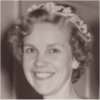 | Name: Olive
Overview: Olive married Gordon in 1956 and the following year he was diagnosed with Type 1 diabetes. He received good treatment at Kings College Hospital in London from R.D. Lawrence, who founded the British Diabetic Association, but with some younger doctors, he felt he was `imparting more information to them than they were giving back to him.` Gordon had several hypos and their daughter said she hated hearing him groan in the night, but Olive thinks that her children became more caring people as a result of their father`s diabetes and that the whole family benefited from having a healthy diet.
Hits=1 |
|
|
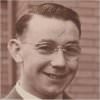 | Name: Roy
Overview: When Roy was diagnosed with diabetes at the age of 17, he was admitted to Leicester Royal Infirmary for a month. He remembers learning about injections and urine testing but can`t remember any guidance about diet, apart from advice to cut out all sugar. He would like to have joined the forces during the Second World War, but failed his medical examination. According to his wife, he has had many serious hypos ever since he was diagnosed. He began to lose his sight in 1972 and now only has very slight vision in one eye.
There is also an interview with Roy`s wife, Madge.
Hits=1 |
|
| 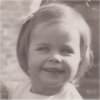 | Name: Joan B
Overview: Joan began to lose weight when she was three. Her doctor had never seen a child with diabetes and so failed to act until she was critically ill. When she recovered, she had to weigh every slice of bread, but was allowed extra wartime rations of cheese, meat and fish. She has been married to Clive since 1962 and has one son. She would like to have worked as a children`s nurse, but was advised that she wasn`t fit enough, and she was would like to have had more children, but had three miscarriages, which she attributes to diabetes.
There is also an interview with Joan`s husband, Clive.
Hits=1 |
|
|
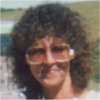 | Name: Mary Potter
Overview: Mary Potter`s daughter, Joanne, developed symptoms of diabetes in 1978, when she was five. Her GP refused to believe she had diabetes and Joanne nearly died. This traumatic beginning left a legacy of anxiety and anger. Mary noticed that another mother of a diabetic child was more laid-back than she was. She also noticed that when a niece was diagnosed around ten years later, there was much more specialist help and information available. Mary still sometimes accompanies Joanne to diabetic clinics. Joanne hates clinic visits because she feels that doctors treat her like a child and make her feel guilty.
There are also interviews with Mary Potter`s daughter, Joanne Pinfield, and with Joanne`s husband, Nick Pinfield.
Hits=1 |
|
| 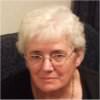 | Name: Lesley Prichards
Overview: Lesley`s daughter, Julie, was diagnosed with diabetes in 1978, aged nearly five, and she was in hospital for three weeks. Parents were not allowed to stay with their children, but Julie enjoyed hospital and decided then that she wanted to become a nurse. (She is now a Diabetes Research Nurse.) Meal times were rigid at first and Lesley and her husband still keep to those rigid times, though Julie does not. Later, while Julie was pregnant, she stayed with her parents whenever her husband worked nights - and Lesley feels that she`ll always have some involvement in her daughter`s diabetes.
Hits=1 |
|
|
 | Name: Kushira Hackett
Overview: Kushira Hackett`s mother was white and her father black – from Guyana. Her parents split up when she was 5 and her mother later married a Jamaican. After diagnosis, the hospital staff explained to her mother about portions and gave her scales for weighing food, but gave no explanations to Kushira. Her mother also gave no explanations, and she thinks this led to her rebellion against diabetes, and to her leaving home aged 16. She had a period of homelessness, but later gained a law degree and now lives happily in Birmingham with her partner and two children.
Hits=1 |
|
| 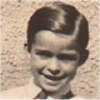 | Name: Richard Fawkes
Overview: Richard Fawkes` father worked as a railway engineer in Argentina and Richard was brought up in an expatriate British community. His father died during the war, and he returned to England in 1945 to work in the family firm. He shared a house with his mother and sister for many years, but has lived alone since 1980. He has sung in amateur musicals, renovated houses, including the one in which he now lives, and painted 1,600 paintings, most of which he has sold. He is currently recovering from a heart attack.
Hits=1 |
|
|
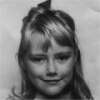 | Name: Clare
Overview: Clare was brought up in a remote Cornish hamlet. Although she developed Type 1 diabetes around the age of 5, she was not given insulin until about 4 years later and was instead kept on a near-starvation diet. She rebelled for many years and only began to take care of herself after she was registered blind in 1984. She went on to gain a second BA, MA and PhD and is now a university research fellow. She has been helped by coming to regard her lack of sight as `an issue around social equality as opposed to a medical issue`.
Hits=1 |
|
| 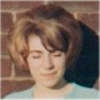 | Name: Margaret
Overview: Margaret developed pneumonia from living in a damp prefab and missed a lot of school. At 9 she attended an open-air school for sick children and was ostracised at secondary school because of her different background. She left at 15 with no qualifications, but earned more as a seamstress than her father did on the railways. She was diagnosed at 18 and married at 20. Her husband was in the RAF and she was treated in RAF hospitals. She has had serious hypos and many health problems, but enjoys making spectacular iced cakes and playing with her grandchildren.
Hits=1 |
|
|
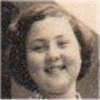 | Name: Amy Yau
Overview: Amy Yau`s mother was a stenographer; her father was a health inspector, and they both came from mixed race backgrounds. Amy was born in Singapore, just before it was invaded by the Japanese, and was saved by the presence in her household of her Japanese grand-mother and great-aunt. She came to England to train as a nurse in 1960 and married a few years later. Her husband originates from mainland China and opened the first Chinese restaurant in Malvern. She helped out in the restaurant while her children were growing up and then returned to nursing.
Hits=1 |
|
|  | Name: Lisa McGregor
Overview: Lisa McGregor was diagnosed shortly before starting secondary school. She spent two weeks in hospital, where she learnt to inject herself from the outset. She was given a `traffic light` book, listing forbidden and permitted foods, but didn`t follow the diet strictly. She injected herself twice daily for 20 years until moving to a more flexible regime, with four injections, in 2003. She describes it as a DAFNE regime (Dose Adjustment for Normal Eating), but hasn`t attended a DAFNE training course. She has had few health problems, but several frightening experiences as a result of hypos.
Hits=1 |
|
|
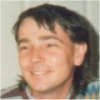 | Name: Philip Newick
Overview: Philip Newick comes from a working-class Bristol family which was greatly affected by redundancies in the aircraft industry. Determined to escape such insecurity, he did a degree and postgraduate work in chemical engineering. He worked for HJ Heinz until after diagnosis, when he was told that he could no longer work abroad. He then got a job nearer to his home in Birmingham and all his treatment has been in that city. He and his wife still weigh and measure all his food and he has few health problems - apart from an inability to detect the onset of hypos.
Hits=1 |
|
| 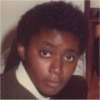 | Name: Patsy
Overview: Patsy is one of ten children. Her parents emigrated from Jamaica in the 1950s. Her mother worked as an auxiliary nurse and her father as a builder. After diagnosis, she resented having to weigh portions of carbohydrate, while her family could eat what they liked. She still calculates the weight of food. The question `Why me?` has persisted throughout her life. She feels that everything possible has gone wrong with her health and she is now on haemodialysis. But her love for her young son keeps her going and, despite poor health, she`s determined to spend time with him.
Hits=1 |
|
|
 | Name: Emma Cherry
Overview: By the time Emma Cherry was diagnosed in 1988, GPs were familiar with childhood diabetes; hospital children`s wards were used to dealing with it, and Emma remembers a wonderful diabetes specialist nurse who showed her how to inject herself, and later called at her home twice daily to supervise her early attempts. Her schools, university, and colleagues at work all accepted her without any fuss, and she has never been made to feel `different`. Injections and blood tests are such a routine part of her life that she wonders how she would cope with a cure!
There is also an interview with Emma`s mother, Zin Cherry.
Hits=1 |
|
| 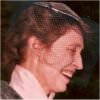 | Name: Beryl Smith
Overview: Beryl Smith first met children with diabetes when she was a student nurse and junior staff nurse at Birmingham Children`s Hospital from 1953 to 1957. She gave up nursing after she got married and didn`t encounter diabetes again until her own daughter, Catherine, was diagnosed in 1964, at the age of five. Catherine had so-called ‘brittle` diabetes, with frequent hypos – until she received two islet transplants in 2006/7. Beryl`s husband, David, developed Type 2 diabetes in 1983. At first he was on tablets, but was able to manage on diet alone after he lost four and a half stone.
Hits=1 |
|
|
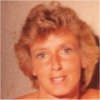 | Name: Shirley Jones
Overview: Shirley Jones` parents had little money to spend on food and she remembers eating bread and jam `many, many times`. She married at 19, divorced, married again at 21, and then her second husband left her to bring up two small children alone before she was diagnosed with diabetes, aged 32. She was recruited into the UK Prospective trial for Type 2 diabetes, but rapidly became insulin-dependent. Until recently, she ran a pub with her current partner. She is now on kidney dialysis.
Hits=1 |
|
| 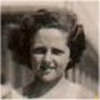 | Name: Ann
Overview: Ann came to England in 1945, and was diagnosed when the matron at her boarding school found her drinking the bath water. Her mother had worked as a nurse at Kings Hospital, London, and took her daughter there, to be treated by R.D. Lawrence (co-founder of the British Diabetes Association, now Diabetes UK). She has memories of being made to go into a hypo, of glass syringes, thick needles, and embarrassing urine tests. She worked as an occupational therapist, and brought up two children alone. Despite eyesight problems, she now makes a living as an artist.
Hits=1 |
|
|
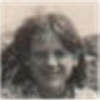 | Name: Mary
Overview: Mary`s father was a baker and her mother a factory worker. When she was diagnosed, the hospital suggested that they should buy a book on diabetes by R.D. Lawrence, but she doesn`t think they read it. She feels she was given very little information, and remembers thinking that her diabetes might disappear when she began to have periods at 15. She made little effort to control her diabetes until she went to a clinic in Oxford in 1983. She works as a podiatrist and reckons that about 75% of her patients have diabetes
Hits=1 |
|
| 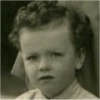 | Name: Simon Lawson
Overview: Simon Lawson`s father was 65 when he was born and his mother 44, and both died while he was in his teens. His unhappiness affected his public school education and he failed to get a place at Cambridge. Instead he worked at Sotheby`s in London and it was only after he married in 1971 that he obtained a degree and a doctorate – leading to his present work as an Oxford University librarian. He has warm memories of being treated by two eminent consultants – RD Lawrence and John Nabarro – and has always enjoyed knowing as much as possible about diabetes.
Hits=1 |
|
|
| Search returned 67 matches |